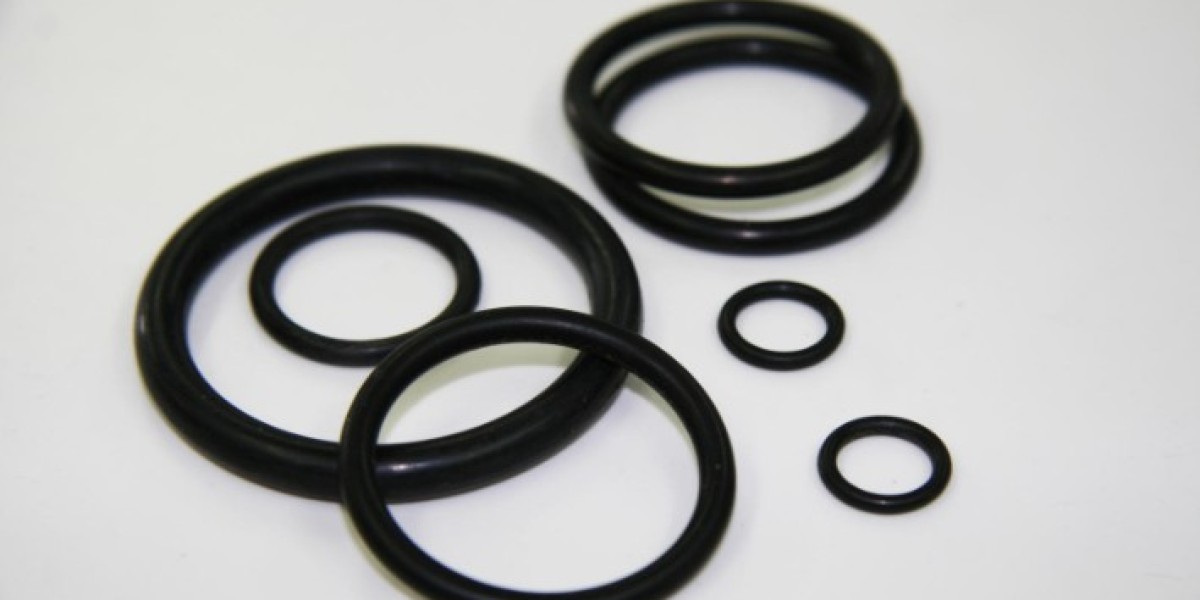O-rings play a crucial role in ensuring leak-free seals and preventing contamination in various industrial applications. One variation of the traditional O-ring is the seamless spliced O-ring, a highly effective and reliable solution for sealing in complex and demanding environments. These specialized O-rings are made by joining two ends of an elastomeric material, which allows for enhanced performance in specific industrial scenarios. In this article, we will explore what seamless spliced O-rings are, how they are manufactured, and the benefits they offer in different industries.
What Are Seamless Spliced O-Rings?
A seamless spliced O-ring is an elastomeric ring that is joined together through a splicing process, ensuring that there are no visible seams or weak points at the joint. Unlike standard O-rings that are produced as a continuous loop, spliced O-rings are made from a long piece of elastomeric material that is cut to the desired length and then carefully spliced (or joined) to form a complete circle. The splice is done in such a way that it does not affect the O-ring's structural integrity, resulting in a smooth, seamless seal.
These O-rings can be made from a wide variety of elastomer materials such as nitrile, silicone, EPDM, fluorocarbon, and more, depending on the specific needs of the application. The key feature of seamless spliced O-rings is that they eliminate the potential weaknesses typically found at the splice point of other O-rings, where traditional methods may lead to uneven thickness, weak bonding, or leaks.
How Are Seamless Spliced O-Rings Manufactured?
The manufacturing process of seamless spliced O-rings typically involves several key steps:
Material Selection: The first step is choosing the appropriate elastomer material for the O-ring, considering factors such as temperature range, chemical resistance, and flexibility. For example, a nitrile rubber material might be chosen for petroleum-based products, while a silicone material would be more appropriate for high-temperature applications.
Cutting and Sizing: The elastomer material is extruded into long, continuous strips and then cut into the required length. The exact dimensions of the O-ring depend on the specific requirements of the application, such as the inner and outer diameter and the cross-sectional thickness.
Splicing: Once the material is cut, the two ends are aligned and bonded together using heat, pressure, or chemical adhesives. This is the critical step in the process, as the spliced section must be as strong and seamless as the rest of the ring. This bonding process ensures that the joint is as smooth and uniform as the surrounding material, creating a seamless structure.
Curing: After the O-ring has been spliced, it undergoes a curing process that hardens the material and ensures it retains its desired properties. Curing may involve heat or chemical treatments, which solidify the elastomer, making it more durable and resistant to wear.
Inspection and Quality Control: Before the O-rings are sent out for use, they are inspected for any potential defects. This includes checking the dimensions, verifying the strength of the splice, and ensuring the O-ring can maintain its integrity under different pressures and temperatures.
Benefits of Seamless Spliced O-Rings
Seamless spliced O-rings offer several benefits over traditional O-rings or those made with visible seams. Some of the advantages include:
Improved Durability: The splicing process ensures that there are no weak points where the O-ring could fail. This leads to enhanced durability and performance, particularly in high-pressure or high-temperature environments.
Customizable Sizes: Seamless spliced O-rings can be made to any required size, making them ideal for unique sealing applications where standard O-ring sizes do not fit.
Leak Prevention: With the absence of seams or gaps, seamless spliced O-rings provide a more reliable seal, preventing leaks and contamination, even in critical applications.
Enhanced Flexibility: These O-rings maintain their flexibility while providing excellent compression, ensuring they can adapt to a variety of surfaces and sealing applications.
Resistance to Environmental Factors: Depending on the material used, seamless spliced O-rings can offer high resistance to chemicals, extreme temperatures, and harsh environments. This makes them suitable for use in industries like automotive, aerospace, oil and gas, pharmaceuticals, and more.
Applications of Seamless Spliced O-Rings
Seamless spliced O-rings are used in a wide range of industries and applications, where reliable sealing is crucial. Some of the common areas where these O-rings are used include:
Hydraulic Systems: In hydraulic machinery, seamless spliced O-rings provide essential seals for preventing leaks in systems with high pressure.
Automotive Industry: O-rings are used in engines, transmission systems, and brake lines, where a reliable seal is needed to prevent fluid leakage and contamination.
Aerospace: In aerospace systems, O-rings are critical for sealing fuel lines, hydraulic systems, and other parts where high-performance sealing is essential.
Oil and Gas Industry: The oil and gas industry often deals with extreme pressure and temperature conditions. Seamless spliced O-rings are used in pumps, valves, and other machinery to ensure leak-free operation.
Food and Pharmaceutical Manufacturing: In these industries, where hygiene and contamination prevention are vital, seamless spliced O-rings are used in equipment that processes liquids and gases, such as pumps, mixers, and containers.
Conclusion
Seamless spliced O-rings represent a cutting-edge solution for applications where reliable sealing and durability are of the utmost importance. By eliminating seams and weak points, these O-rings provide a smooth, consistent seal that helps to prevent leaks and contamination. Whether used in high-pressure hydraulic systems, automotive applications, or complex aerospace technologies, seamless spliced O-rings offer unmatched performance, making them a crucial component in various industrial sectors.








